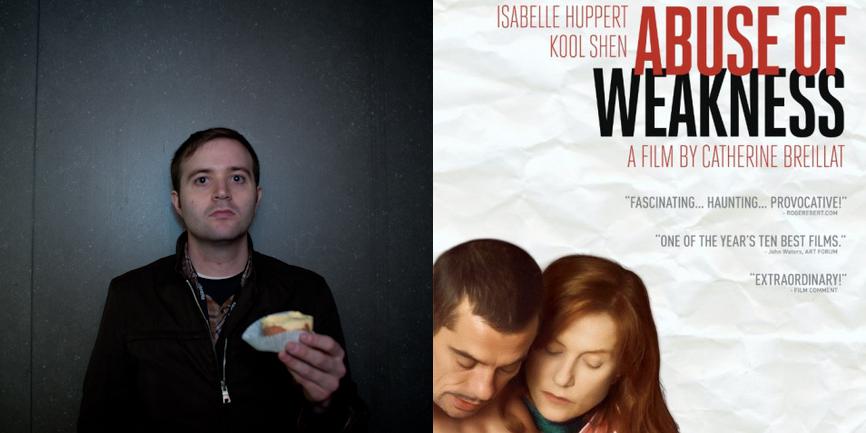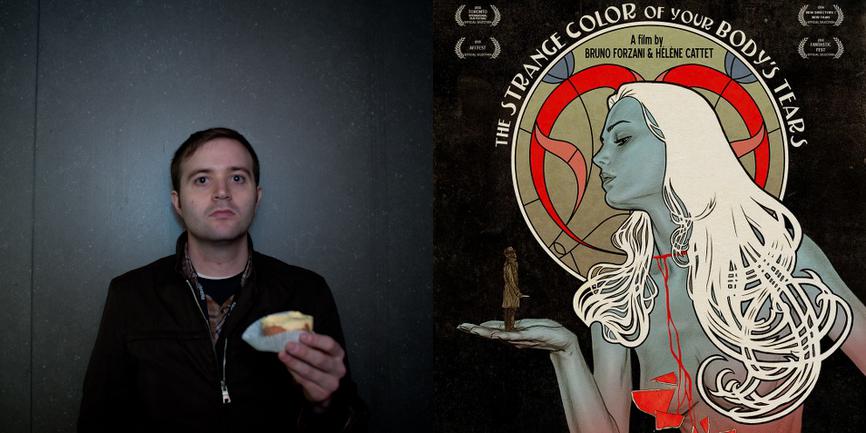An early scene in Wiktor Ericsson’s documentary A Life in Dirty Movies finds the aging filmmaker Joseph W. Sarno and his wife, Peggy, his junior by almost two decades, rewatching Vibrations, one of Joe’s old movies. On the television, two women and one man writhe around in a stark black-and-white threesome. Peggy tries to remember if the sex was real or not. A few scenes later, two women meet in a hallway, bathed in shadow and filmed in a tight two-shot. “Now, you see this is so typical of Joe’s lighting,” Peggy comments, beaming with pride in her husband’s work. It’s an endearing, personal entrance into their world — tucked away in their New York City apartment, as Joe hammers away on a new script, and Peggy does pretty much everything else around the house.
His New York Times obituary labeled Sarno a “sexploitation film director” and that’s about as succinct a description as you’ll get. I discovered his work as a teenager rummaging through the exploitation section at Video Vault in Alexandria, VA — renting every Something Weird Video release that was in black and white. Sarno’s work was a cut above the rest — with clear-eyed composition and a genuine investment in his characters. I devoured everything I could find by him, and still do to this day, as lost Sarno films get unearthed once every year or two. As a teenager and college student, I admired his work as a remarkable achievement in smut, but have grown to see what it truly is (and which Ericsson’s film adamantly presents it as) — art cinema that had to pretend to be smut in order to be produced. Sarno’s work continues to inspire me. His wife-swapping classic Sin in the Suburbs was hugely influential on my last feature, to the degree that I scoured the Internet to find a suitable replica of a bird mask worn in one scene. It’s the only direct reference I wanted to include in the movie, a relic of the low-budget sexploitation films of the past (movies that made me want to make movies) in my little no-budget indie.
Sexploitation, for all intents and purposes, is extinct. Porn killed it, or it least banished it to pay-cable and video store chains that wouldn’t stock anything with hardcore sex. If it wasn’t completely gone then, it certainly is now — who needs it in the age of the Internet? As the sex movie waned and withered in the ’80s and ’90s, “independent” film entered a golden age. This isn’t a coincidence. Hoity-toity intellectuals and lazy film schools have only chosen to canonize John Cassavetes, Morris Engel and their ilk as the pioneers of the modern indies, bucking the system in an imaginary vacuum. Anyone who’s delved into the Something Weird catalog knows this is bunk. There’s a world of independent artists, auteurs even, who created personal, challenging work for the smut circuit. As Sarno himself puts it, “Sex films gave you all the opportunities in the world.”
Sarno directed roughly 50 features under his own name, and countless others under pseudonyms. At the height of his productivity, he was as prolific as Fassbinder, maybe more so. Almost half of the official Sarno oeuvre was released between 1966 and 1968. An avid fan of Ingmar Bergman, his films are tightly constructed, economically executed and emotionally complex dramas about the things we do to each other in pursuit of love and lust. Though Sarno’s gained more attention in the last 10 or so years, he’s almost always presented as a higher-brow sexploitation director and not much else. It’s a shameful oversight for film history but, luckily, repertory programming (in New York, at least) has been coming around the past few years and has started recognizing these filmmakers as the artists they were. Honestly, who else could be a better model for a young filmmaker starting out, or any of us, for that matter? Sarno made movies his way and, until XXX burst his bubble, his was an effective and successful production model.
While Sarno’s work is the subject of the A Life in Dirty Movies, the film’s real star is his wife, Peggy. She’s a firecracker, with a dark bob, darker eyeliner, and a smoker’s rasp. Her energy and intelligence are infectious, and it’s clear she’s running the show. After making her on-screen debut in Adolfas Mekas’ experimental feature Hallelujah the Hills (!!!), she auditioned for Sarno and snagged a small part in The Love Merchant. While mostly gracing the silver screen under her husband’s direction, she also managed to appear in films by Doris Wishman (again, !!!!) and Michael and Roberta Findlay (no, seriously, !!!!!!) Forty years after her last movie, the camera still loves her. Peggy, are you interested in acting again? Call me?
A Life in Dirty Movies doesn’t try to reinvent the bio-doc wheel. There are the usual talking-head montages, which are thankfully lower on the hyperbole scale than most of these things. Of course, John Waters gives his two cents. (There are so many thousands of hours of Waters’ talking-head interviews out there that someone could create a digital library of his opinions on literally everything and keep his personality going long after his death, Videodrome-style.) Some forward plot momentum is attempted by following Sarno’s efforts to make a new picture (though Peggy has to point out that people now use cell phones to call each other, not phone booths). The photography is no-frills and serviceable, though it can be effectively intimate and allows the clips from Sarno’s work to stand out as boldly cinematic by contrast. It’s tough to make this format feel fresh (most music docs these days are virtually indistinguishable from one another), though Ericsson thankfully avoids The Kid Stays in the Picture syndrome and lets the footage speak for itself, without any annoying bells and whistles.
So, here’s to Joseph W. Sarno, an important independent filmmaker who just happened to make sex movies. For Sarno aficionados, A Life in Dirty Movies is a nice little peek behind the curtain and a decent CliffsNotes guide to his themes and aesthetics (though it’s suspiciously devoid of any discussion of his signature over-the-shoulder two-shots). If you’re not familiar with Sarno’s work, this isn’t a bad place to start, like buying a greatest hits album to see if you’ll like a band. However, if arty, character-driven sexploitation movies sound even remotely up your alley, you might as well dive right in and see some of my favorites: Sin in the Suburbs, Flesh and Lace, The Love Merchant, The Swap and How They Make It, Moonlighting Wives, The Sex Cycle, My Body Hungers, Vibrations, Inga, All the Sins of Sodom, The Layout, Passion in Hot Hollows, The Seduction of Inga and Abigail Lesley is Back in Town, all of which are commercially available. Pay attention and you won’t just learn how Sarno made movies, but how good movies are made.






